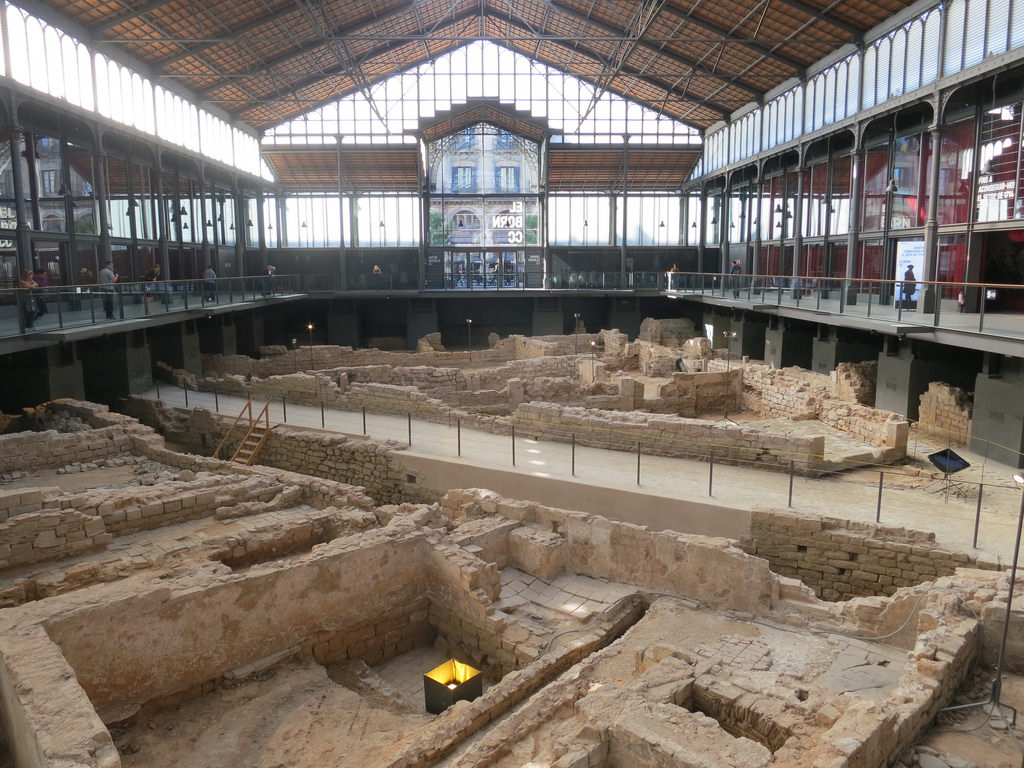

Photo credit: wka via Visualhunt / CC BY
Barcelona is a city which has been rebuilt and remodelled throughout the centuries, and its layers of history date back to prehistoric times. In recent years, these layers have been uncovered by archaeologists, and many of the major archaeological sites around the city are now open to the public. A guide to some of the best sites is given below.
Table of Contents
Below the former market of El Born, an important archaeological discovery was made in 2002 during work to renovate the site. Here the remains of part of the medieval city were uncovered. The buildings found here were demolished following the Catalonian defeat of 1714 during the War of Spanish Succession. They were destroyed at the orders of Philip V in order to make way for the Ciutadella (Citadel, which has now been replaced by a park of the same name). Here we can catch a glimpse of what life might have been like prior to the destruction. Due to surviving written records, much is known about the people who lived and worked in this area, and you can find out more by visiting the Cultural Centre (El Born CC). Opened in 2013, the Cultural Centre includes the archaeological site, an exhibition on Barcelona in the 1700s, and several bars, cafes and restaurants. If you wish to visit the excavations (i.e. enter the site) you will have to go to the information desk and ask for a guided tour in the evening. At the time of writing, no tours were available in English until July 2016. Another option is to take an audio-tour of the excavations from the walkways above (€4.50). The walkways themselves have information boards which contain information on the site below, and these can be viewed free of charge.
The Museu d’Història de Barcelona (MUHBA) has several sites across the city. MUHBA’s main exhibition in Plaça del Rei houses the remains of part of the Roman city of Barcino, which you can read about in more detail here. You can also visit the foundations of an early Episcopal complex (4th – 7th Centuries AD). An audio-guide to the excavations is included in the ticket price (€7).
The Mercat de Santa Caterina has been built on top of the foundations of a 13th-Century Dominican Monastery, which can be viewed in the public space operated by MUHBA (free entry, open Mon, Wed, Sat 7:30am – 3:30pm; Tue, Thur, Fri 7:30am – 8:30pm).
You may be fortunate enough to see archaeology in action around the city. For example, during the pedestrianisation of the Carrer de la Tapineria (leading from the Gothic Cathedral to the Via Laietana), archaeologists have been hard at work searching for cultural treasures before the area is paved over. Although the work is due for completion soon, you may still see some excavations taking place before the final pavement is laid. In Barceloneta, excavation of the 16th-Century Baluard de Migdia (South Bastion) is taking place. The bastion was built to protect the city from the ravages of the sea and is now being uncovered in what is to become another public space from which to view the city of the past. The site is located close to the Barceloneta Metro station and is due to be open to the public this month (May 2016).
If you take the time to visit any of the sites listed above, you will gain an appreciation of how the modern city has been built upon ancient foundations. This guide presents just a snapshot of the archaeological treasures to be found in Barcelona and the surrounding area. Why not explore further for yourself, and discover more?
Barcelona’s Mediterranean climate, with increasingly warmer and longer summers, makes air conditioning an essential feature…
Maybe you're thinking about selling a property or you've just inherited one or more real…
Do you enjoy strolling among trees and plants, away from the hustle and bustle of…
If you are planning to move to Barcelona for a few months or permanently, one…
ShBarcelona establishes itself as the leading agency within the Apialia Eixample Group, reaffirming its position…
Are you going to visit Barcelona this 2025? The vibrant Catalan capital once again becomes…